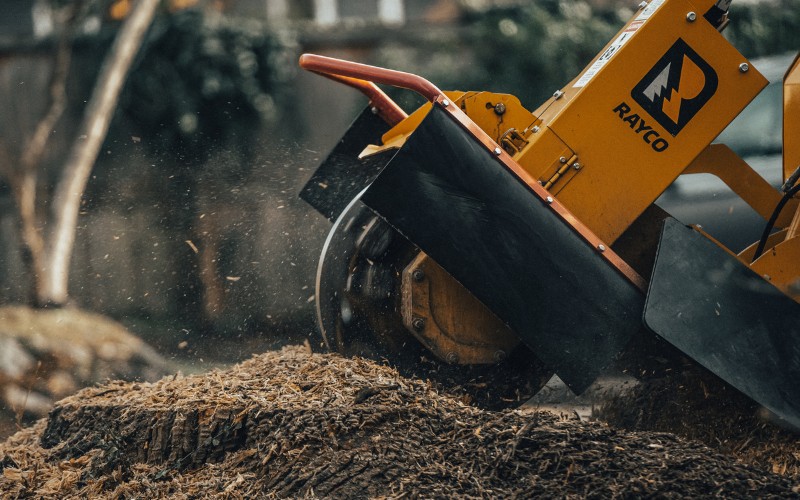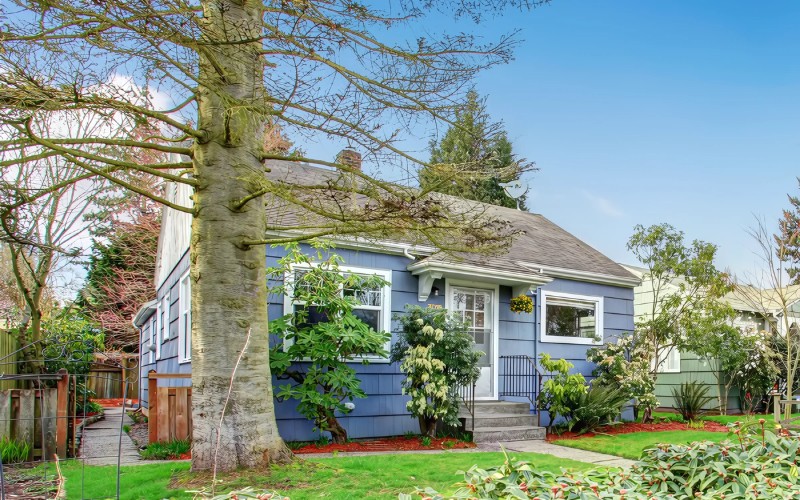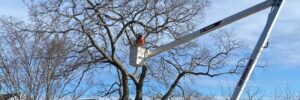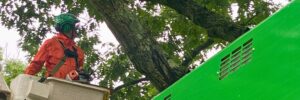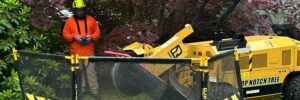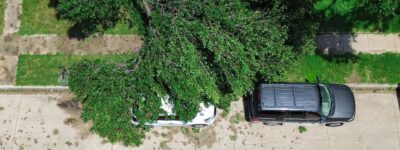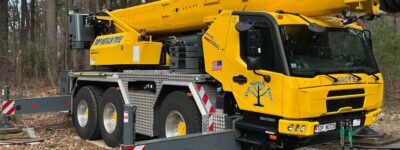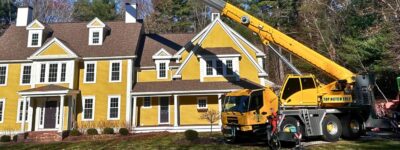With Massachusetts now allowing accessory dwelling units in single-family zoning districts statewide, many homeowners are eager to expand their properties. But before any ground is broke, there’s one thing that could slow you down: your trees.
Whether it’s a trunk in the footprint of the build or root systems too close for comfort, you’ll need to make some tough decisions. Here’s how to figure out which trees are safe to keep – and which ones could stand in the way of your ADU project on the South Shore.
Key Takeaways:
- Remove dead or hazardous trees near your planned ADU site to ensure safety for the construction process and future occupants.
- When deciding which trees to keep near your ADU, consider the height of the trees (which creates a falling risk zone) and the spread of root systems (which can damage foundations).
- Trees with more than 40 percent of their root system damaged during construction will likely die, making preemptive removal a better option than trying to preserve them.
- Replanting with smaller ornamental trees, like Eastern redbuds, Japanese maples, and flowering dogwoods, can restore some ecological benefits without creating future hazards.
- Consider relocating your planned ADU site to preserve mature trees, which provide significant property value, energy savings, wildlife habitat, and environmental benefits that would take decades to replace.
Plan Around Your Trees Before ADU Construction
Accessory dwelling units (ADUs) are becoming increasingly popular across the South Shore for good reason. Whether you’re creating space for family, boosting property value, or generating rental income, ADUs are a smart investment.
But one of the biggest decisions you’ll face early in the process is what to do with the trees near your proposed ADU site. You don’t want to clear more than necessary and lose the natural beauty of your yard – but you also can’t risk limbs falling on the new structure or its occupants.
Remove Any Dead or Dangerous Trees First
The first step is to identify any dead or dangerous trees and remove them from the premises as soon as possible. Some signs to look for include:
- Bark damage
- Leaning
- Holes and cracks
- Decay
- Exposed roots
Have an arborist perform a tree risk assessment to determine if they pose a risk to your ADU or will be a risk during future construction.
Decide Which Trees to Keep or Remove
Once you have all the potentially hazardous trees out of the way, you can begin planning what other trees you’ll have to remove for the project. Trees can cause issues for structures in many ways, but two of the most common are falling on structures and the roots interfering with the foundation.
Look for Trees at Risk of Falling into the ADU
While trees add a lot of economic and aesthetic value to your property, they can put your landscape at risk if they are too close to structures. Many homeowners end up planting trees too close to their homes because they don’t understand their size at maturity.
When building an ADU, you’ll need to account for the distance of any trees you have nearby. If the height of a tree is equal to or greater than the distance to the ADU, there is a chance it can hit the structure in the event of a failure.
Healthy trees are less prone to failure than stressed ones, but any structure within a tree’s target zone is at risk. Talk with an arborist to determine if removing these large trees is necessary to make your ADU safer.
Pay Attention to Root Systems Near the Foundation
Root systems can interfere with building foundations when there is a preexisting structural weakness in the foundation. They can also interfere with underground sewage or drainage systems as they seek out hydration and take advantage of compromised pipes. Removing trees whose roots are close enough to cause these issues will eliminate any risk from the ADU, but will do so at the sacrifice of site beauty and aesthetic.
Building an ADU’s foundation also requires digging, which can sever any roots in the area. Destroying these roots will limit the tree’s ability to anchor itself in the ground and supply itself with nutrients and water.
While losing a few roots won’t kill a tree, anything over 20 percent of the root system will cause stress. Losing more than 40 percent of the root system at once will likely kill your tree.
“If you’re planning to build, it’s always a good idea to walk the site with an arborist before you start. We can tell you which trees are likely to be affected and whether they can be protected or should come out. It’s a lot easier – and cheaper – to make those decisions before the foundation’s poured.” Jeff Van Meter, ISA Certified Arborist and Owner of Top Notch Tree
Consider Adjusting Your ADU Site to Preserve Mature Trees
We’ve had a lot of homeowners in the South Shore reach out lately as they plan for new ADUs – and one of the biggest questions we hear is, “Should I take down this huge tree to make room for the ADU?”
Honestly, in many cases, it makes more sense to move the ADU than to remove a mature tree that’s been there for decades.
Mature, stately trees add plenty of value to your property, both in terms of aesthetics and monetary benefits. Some of the benefits of shade trees include:
- Increased property value
- Decreased cooling costs in the summer
- Shelter for mammals and birds
- Cleaner air
- Reduced storm runoff
Even if you replant the same species elsewhere on your property, it will take decades before you can enjoy the same benefits. Sometimes, the easiest way to have your ADU work in harmony with trees is to move the proposed building site to a new location.
Frequently Asked Questions About Trees and ADUs
To help you better understand the relationship between trees and ADUs during and after construction, we’ve answered some of the common questions homeowners have about it.
How can I protect my trees during ADU construction?
Some simple ways you can protect your tree during construction include:
- Place a fence around the tree’s root zone
- Avoid parking equipment on soil
- Don’t dig close to a tree to avoid severing roots
- Monitor your tree’s condition before, during, and after construction
Do I need a permit to remove trees when building an ADU?
Depending on your local municipality’s regulations, you may need a tree removal permit. Cohasset, for example, requires permits for land clearing activities that remove trees with a trunk diameter of more than 4 inches. Additionally, due to the Massachusetts Wetlands Protection Act, you’ll need to get approval and a permit to remove trees in wetland areas.
How far away should I plant trees from a structure?
While there’s no one-size-fits-all rule when it comes to how close you can plant or keep a tree to a structure, the general guidelines are as follows:
- Small Trees (25 Feet or Lower): Plant them at least eight to 10 feet from any walls, and six to eight feet from corners.
- Medium Trees (25-40 Feet): Keep them 15 feet from walls and 12 feet from corners.
- Large Trees (More than 40 Feet): Plant them at least 20 feet from a wall and 15 feet from a corner.
Make Sure Your ADU and Trees Can Coexist – Talk to Top Notch Tree
When building a new ADU – or doing any major project on your property – it’s easy to overlook the impact trees can have on construction. Without a solid plan, you might end up removing more trees than necessary or leaving ones in place that later cause problems.
At Top Notch Tree, we can assess your site, help you figure out which trees to keep or remove, and safely handle the work before construction begins. Call us today at 781-871-8008 or request an estimate online.



